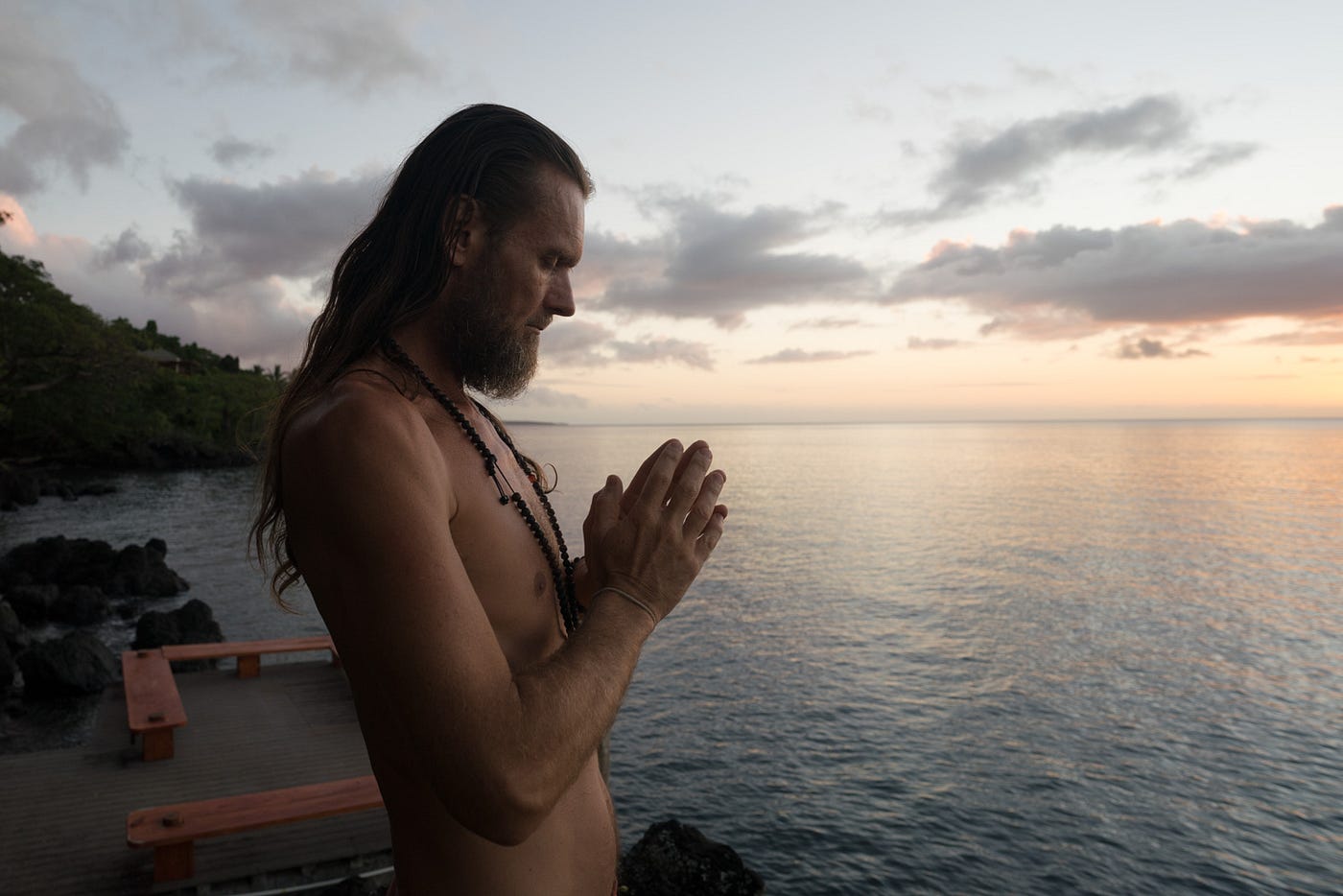Why Yoga is About Breath and Not Body-Sculpting | Mark Whitwell
For many years I met with my teacher Desikachar at his home in Chennai. At each meeting, he would instruct me on how to practice asana as participation in breath. He would emphasize that the breath is not a supplement to the asana, but the very purpose of the physical movement itself.
The body movement is for the breath movement. Every time I lost contact with my inhale or exhale, he would gently bring me back. Enveloped by breath, my mind settled into its source: the power and stillness of the whole body.
My teacher showed me how Yoga has taken the principle of breath and turned it into a profoundly useful and healing activity. Many decades on, it is becoming common to find yogic breathing practices in our healthcare institutions and schools.
Science has long since confirmed what yogis have known for millennia: that connecting breath movement with slow, rhythmic body movements has a deeply healing effect on our mental and physical health.
“When we are doing the practice,” Dr. Rosalie Chapple writes, “we bring down the heart rate, which tells the body to relax at all levels. The practice is a powerful remedy to a variety of mental health conditions.
There is reliable clinical evidence for the use of moving and breathing in the treatment of depression, anxiety, and post-traumatic stress disorder. Control and regulation of the breath is the most important part of the practice.”
We know that Yoga has a specific effect upon our nervous system’s ability to self-regulate amid the ups and downs of daily life.
In our natural state, the body’s nervous system alternates fluidly between a sympathetic (fight or flight) and a parasympathetic (rest and digest) state.
Our bodies are an intrinsic intelligence that shifts emphasis between the two throughout the day: each inhale engages the sympathetic system and each exhale the parasympathetic; our right nostril governs the former and our left the latter.
We are equipped by nature to be active and restful, aroused and still, engaging and digesting.
The stress of modern life however keeps many of us stuck in a sympathetic state of arousal. Under the pressure of work and survival, many of us grow up experiencing life as constant flight from threat; we feel restless and anxious even when we are safe; and some feel unable to relax in relationship with others.
Our culture of competition creates psychologies of fear that keep us working late into the night trying to get ahead. Because everyone is feeling separate and at war with others it seems normal.
By participating in the union of the inhale and the exhale as the very purpose of asana and pranayama, we restore the body’s natural capacity to fluidly oscillate between sympathetic and parasympathetic response as the situation demands.
Just as the body naturally shifts emphasis between the left nostril and the right nostril during the day, practices such as nadi shodhana are used to enact that fluid movement. The key is in the word Hatha Yoga itself: “Ha” meaning right side, solar, masculine; and “tha” meaning left-side, lunar, feminine; hatha meaning the union of the sun and moon.
“Yoga is 99 percent waste removal,” Desikachar would say.
What my teacher means by this is that we are not adding anything to ourselves by practice and nor are we trying to become anything; rather, we are releasing all that has been imposed upon our natural life by culture.
We are leaving the body alone and giving it a chance to function. We are letting its extraordinary and refined animal intelligence express itself. Eventually, we may relinquish the practices altogether and let the body alone in is natural state.
Beyond any specific therapeutic application, Yoga uses breath as the very means to realize our Reality. To be with your breath is to be with that which is breathing you: the power, intelligence, beauty and harmony of Life itself. My teacher U.G. Krishnamurti was very fond of saying, “Breath means spirit, nothing more!”
So much stress in our lives is caused by our imagined sense that we are separate from Life; that we somehow do not belong here on this planet; that we have to find our way back to the garden.
Religion and orthodox spirituality tend to encourage the idea of their being a pathway back to Truth, as if Truth is absent from your life as it is. The idea that Truth is absent and needs to be found is the root cause of humanity’s misery.
In Yoga, we start from the obvious fact that we are Life Itself and Life is a perfect, nurturing intelligence. We start from the recognition that the whole body is the radiance of the Cosmos unfolding in tangible visible form.
We start from the Unity of Mother Nature and our intrinsic state of belonging within and as that Unity. Yoga is not an attempt to get connected. Yoga is participation in that which is already the case.
Now, when I link my breath to my whole body, my mind automatically follows the breath. My mind then becomes linked to the whole body and the whole body is Life Itself.
As we abide in the prior Unity of Life, we find that we are looked after and nurtured. Mother Nature looks after her own. From here, the mind adjusts and the body relaxes.


Comments
Post a Comment